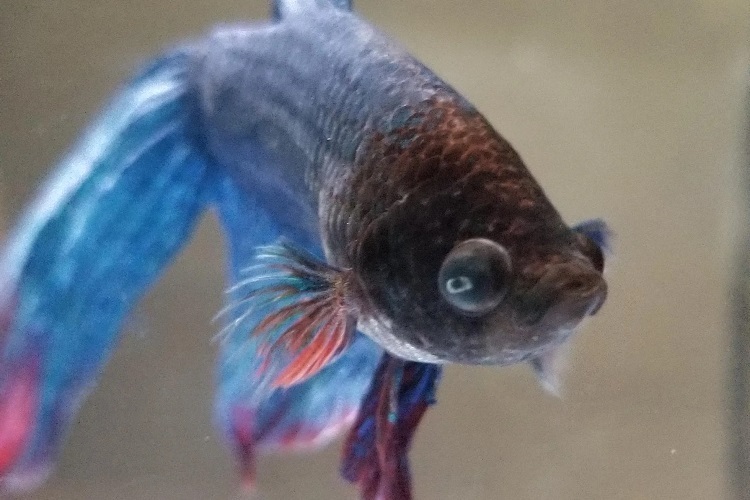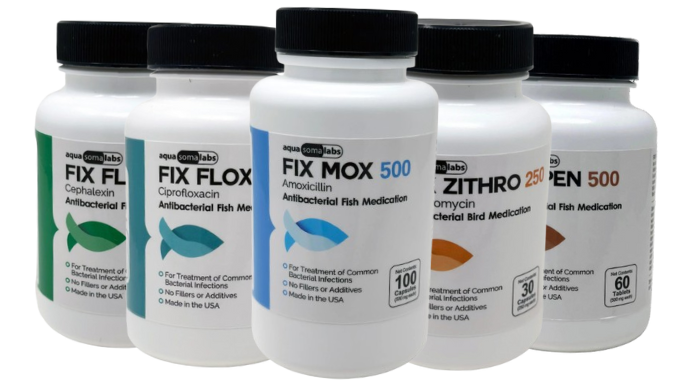Posted by Aquatic Veterinary Specialist on 18th Apr 2025
Betta Fish Diseases: Symptoms, Treatment & Prevention Guide
Betta Fish Diseases
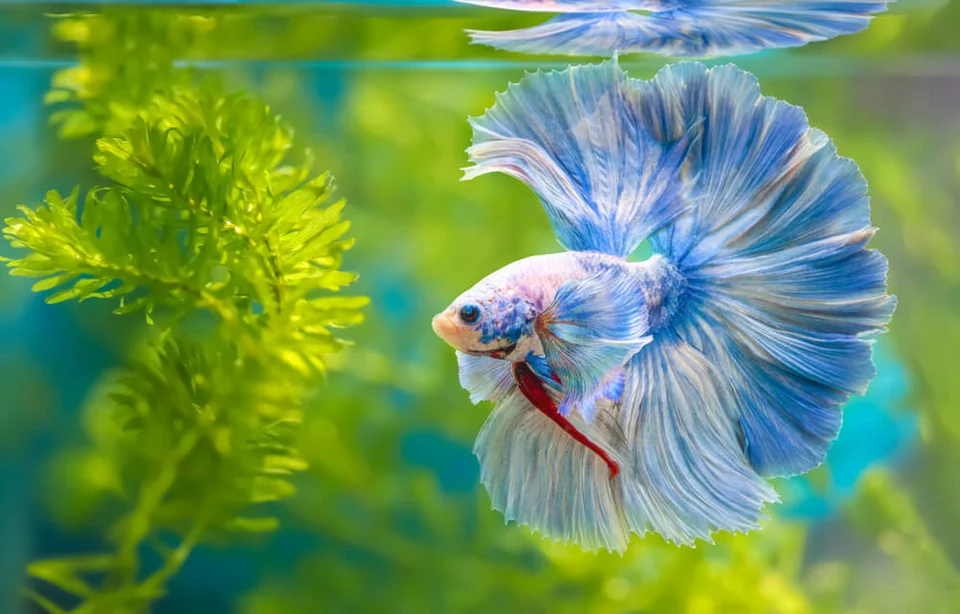
Introduction: Betta fish (Siamese fighting fish) are beloved for their vibrant colors and feisty personalities. While generally hardy, they are still susceptible to a range of diseases – parasitic, bacterial, and fungal – just like any other freshwater fish. Poor water conditions, stress, or injuries can weaken a betta’s immune system and open the door to infections. Early recognition is crucial: common signs of a sick betta include lethargy, loss of appetite, faded colors, labored breathing, clamped or damaged fins. Noticing these behaviors and addressing the cause promptly can prevent minor issues from snowballing into severe complications. In this article, we’ll cover the most common betta fish diseases and their causes, symptoms, progression, treatment, and prevention. By understanding these illnesses and how to treat them, you can help your betta live a long, healthy life. (Keywords: betta fish diseases, how to treat sick betta, betta fish infection treatment, fish antibiotics for bettas)
10 Common Betta Fish Diseases and How to Treat Them
Below are ten of the most prevalent diseases that affect bettas. For each, we discuss what causes it, how to identify the symptoms, how the disease progresses if untreated, and effective treatment and prevention strategies. Quick identification and proper treatment will get your betta back to good health and “swimming happily” again.
1. Fin Rot (Tail Rot)
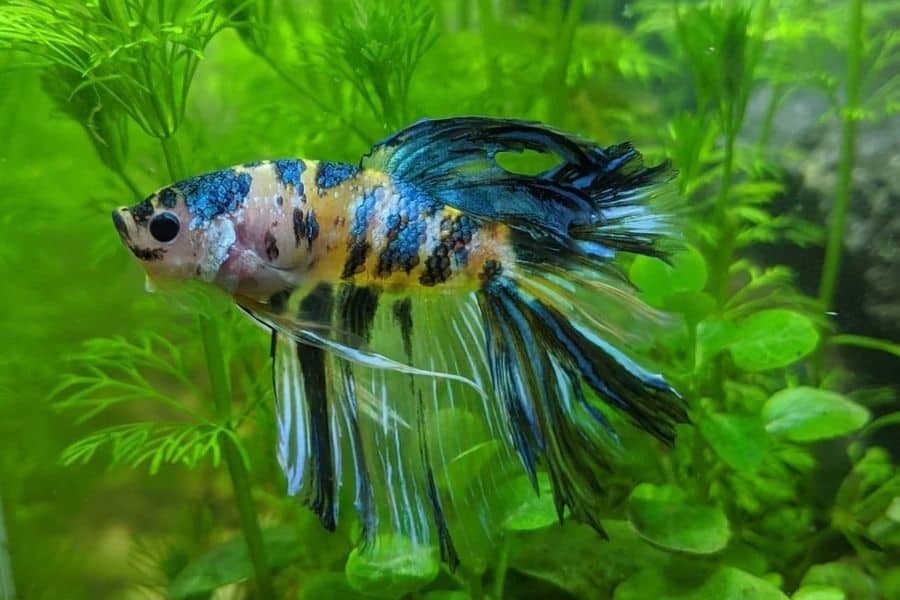
A betta with fin rot, showing frayed and disintegrating fin edges. Cause: Fin rot is a bacterial infection that usually strikes when a betta is stressed or living in poor water conditions. Dirty water, high ammonia/nitrite levels, or extreme stress (e.g. fin nipping from tank mates) give opportunistic bacteria (often Aeromonas or Pseudomonas) a chance to attack the fins. Symptoms: Tattered, ragged fin edges that may appear frayed or torn are the hallmark of fin rot. The fin tips often turn black, brown, or red and may gradually recede toward the body. In advanced cases, the rot can progress to the fish’s body (“body rot”), causing bloody fin bases and lethargy. Progression: If not treated early, fin rot can worsen and eat away at the fins, potentially reaching the fin base and leading to secondary infections. The betta may become inactive and stop eating as the infection spreads. Treatment: Start by improving water quality immediately – perform small, frequent water changes to eliminate the dirty conditions that fuel the bacteria¹. It’s often recommended to quarantine the betta in a clean hospital tank with warm, conditioned water. Mild cases can be treated by adding aquarium salt (e.g. 1 tsp/gal) to help disinfect and heal the fin tissue. In more severe cases, use an appropriate antibacterial medication. Broad-spectrum antibiotics formulated for fish (like erythromycin or tetracycline) are commonly used to halt fin rot in its tracks. Always follow the medication’s instructions and complete the full course of treatment – never stop early, as this can lead to resistant bacteria. Prevention: Fin rot is highly preventable with good husbandry. Keep the tank water clean and stable, perform regular water changes, and avoid overstocking. Ensure your filter is functioning and remove decaying waste. Minimizing stress is key as well – maintain proper water temperature (~78°F), provide hiding spots, and keep your betta with peaceful tank mates (or alone). A healthy diet and clean environment will keep your betta’s immune system strong, making fin rot far less likely to occur².
2. Ich (White Spot Disease)
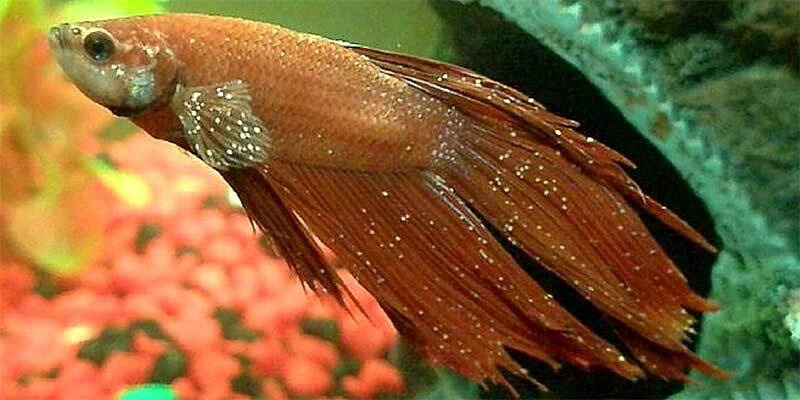
Betta fish with ich – note the multitude of tiny white spots on the fins and body. Cause: Ich, short for Ichthyophthirius multifiliis, is a parasitic protozoan disease often called “white spot disease.” It is highly contagious and can affect most freshwater fish, including bettas. The parasite tends to strike when fish are stressed or when new infected fish (or plants) introduce it into the tank. Poor water quality and sudden temperature drops can also trigger outbreaks by weakening the fish’s defenses. Symptoms: The most obvious sign of ich is the presence of small white dots that look like grains of salt or sugar sprinkled on the betta’s body, fins, and gills. An infected betta often scratches or rubs against tank decor and substrate (a behavior called “flashing”) in an attempt to dislodge the irritants. The fish may become less active, breathe rapidly, or linger near the water surface if its gills are affected. Advanced cases cause severe stress; the betta’s colors might fade and it can develop secondary infections due to skin damage. Progression: Ich has a cyclical life cycle. The white spots are actually the feeding stage (trophonts) under the fish’s skin. After feasting, the parasites drop off, multiply, and then swarm looking for new hosts. If untreated, ich can spread rapidly to every fish in the aquarium and lead to respiratory failure (as gills get infested) or death. Treatment: Prompt action is vital at the first sign of ich. First, quarantine the affected betta if possible to protect other fish. Gradually raise the water temperature to about 80°F (27°C) over 1–2 days – warmer water speeds up the parasite’s life cycle, causing it to leave the fish where treatments can kill it. Next, use an ich-specific medication according to instructions. Common effective treatments include copper-based meds (e.g. copper sulfate solutions) or malachite green/formalin blends. Many aquarists also add aquarium salt (1 tbsp per 5 gallons) to help the fish and disrupt the parasite, as bettas generally tolerate low salt concentrations. Continue treatment for the full duration recommended, even if spots disappear sooner, to ensure the parasite is completely eradicated. Prevention: Ich can be introduced via new fish or plants, so always quarantine new additions for at least 2 weeks and/or use a preventive ich treatment. Maintain excellent water quality and a stable warm temperature to keep your betta unstressed – a strong, unstressed betta is less likely to succumb to ich parasites. Regular tank maintenance and using a UV sterilizer (if available) can also kill free-swimming ich organisms and prevent outbreaks. Remember that ich cannot survive indefinitely without a host, so a fish-free tank kept warm for several days can clear the parasite. Good aquarium hygiene and observation are the best defense against white spot disease².
3. Dropsy (Pineconing)
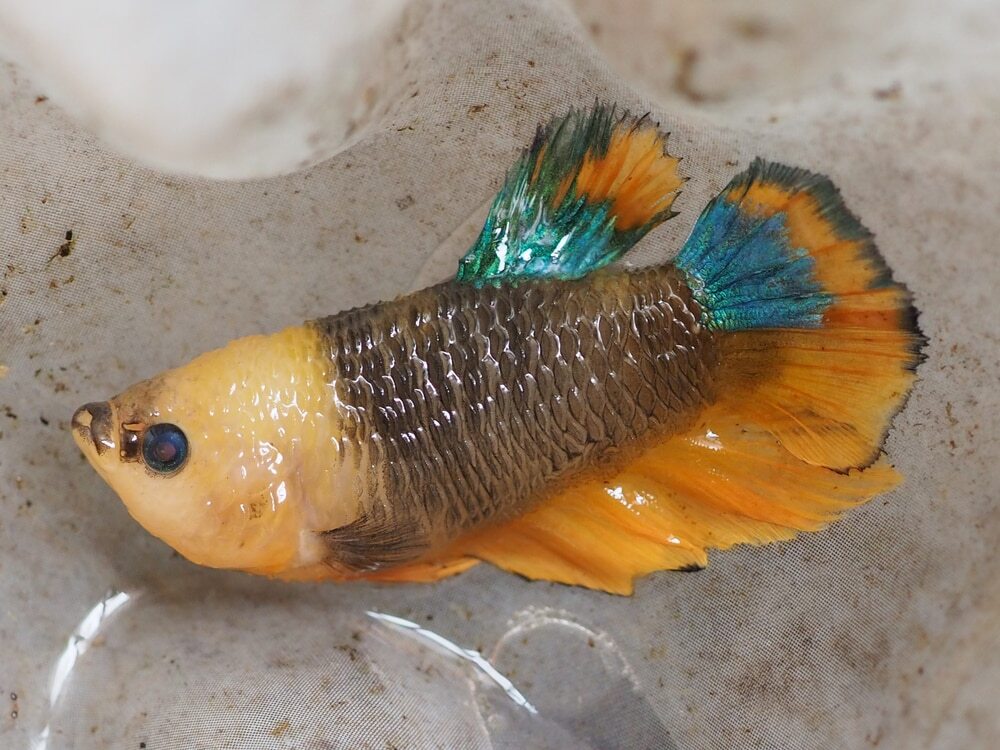
A betta with dropsy, exhibiting a swollen body and protruding “pinecone” scales. Cause: Dropsy is not a single pathogen but rather a syndrome indicating severe internal problems. It is characterized by an accumulation of fluids inside the fish’s body. The underlying causes of dropsy in bettas can vary – often it’s linked to a bacterial infection (such as a renal infection), but it can also result from viruses, internal parasites, or organ failure due to poor diet or extreme stress. Bettas fed exclusively live foods or kept in chronically dirty water seem prone to dropsy, as these conditions can lead to internal infections. Symptoms: The classic symptom is a bloated, swollen abdomen coupled with raised scales that stick outwards, giving the betta a pinecone-like appearance when viewed from above. The betta may also have bulging eyes and pale gills, and it often becomes lethargic, hovering near the surface (because fluid buildup makes breathing difficult). Typically, a dropsy-stricken fish will stop eating as the internal organ failure progresses. Progression: Unfortunately, true dropsy is often a late-stage symptom of organ failure or systemic infection. By the time a betta pinecones, the internal damage (e.g. liver or kidney failure) is severe. If untreated (and often even with treatment), dropsy can rapidly lead to death as the organs shut down. It is also contagious in the sense that the bacteria or pathogen causing the internal infection can spread to other fish through the water. Treatment: Treating dropsy is challenging, but not always impossible. Immediate isolation of the sick betta in a hospital tank is recommended to prevent spread of any infectious agent. Raise the water temperature slightly (80–82°F) to boost the betta’s metabolic and immune function. Aquarium salt baths can help draw out some fluid and reduce swelling – for example, dissolve 1 teaspoon of salt per gallon and let the betta soak for 10–15 minutes (monitor closely). The primary treatment, however, is usually a broad-spectrum antibiotic since bacteria are a common culprit. Antibiotics such as kanamycin (Kanaplex) or a combination like Maracyn 2 (minocycline) are often used in hopes of fighting off internal infection. Anti-parasitic medication may be added if parasites are suspected. Keep the water pristine and well-oxygenated during treatment. Sadly, if a betta is very pineconed, the prognosis is poor – many do not survive even with treatment. Prevention: Because dropsy is usually the result of underlying issues, the best prevention is to avoid the stressors and infections that lead to it. Maintain excellent water quality and a suitable diet to support organ health. Avoid overfeeding (which can cause constipation and organ stress) and feed a variety of high-quality betta foods to ensure balanced nutrition. Quarantine new fish to prevent introducing parasites or bacteria that could cause internal infections. If you ever notice early signs of bloating or other illness, address it promptly rather than letting it progress to full-blown dropsy. Keeping your betta’s immune system strong through low-stress, clean living conditions is the surest way to prevent dropsy¹.
4. Popeye
Close-up of popeye in a betta – the left eye is grotesquely swollen and protruding. Cause: “Popeye” in fish refers to a condition where one or both eyes bulge out abnormally. In bettas, popeye is usually a symptom of an underlying issue rather than a disease itself. The most common cause is a bacterial infection attacking the eye tissue, often due to chronically poor water quality. Ammonia or nitrite burns and filthy water make a betta prone to eye infections and fluid buildup behind the eye. Sometimes physical trauma (e.g. the betta ran into something or fought another fish) can injure the eye and cause swelling. Less commonly, parasites or mycobacterium (fish TB) can cause popeye – in those cases the condition may accompany other symptoms. Symptoms: The defining symptom is a swollen, protruding eyeball. It may affect one eye (unilateral popeye) or both (bilateral). The eye often appears cloudy, discolored, or with a whitish fluid around it. The area around the eye can look reddened or irritated. In mild cases, the fish’s behavior might remain normal, but severe cases can impair vision. Bettas with popeye might be less active or hide more if the swollen eye causes discomfort. Loss of appetite can occur if the infection is systemic. Progression: If the underlying cause isn’t treated, the swelling can worsen to the point of the fish possibly losing the eye. Prolonged popeye can indicate systemic infection (septicemia), which might progress to dropsy or other organ issues. However, if it’s due to injury, it might not worsen and could heal slowly once the injury is resolved. Treatment: The first step is to improve water quality immediately – perform a major water change and clean the tank to remove any irritants or bacteria in the water. Next, move the betta to a quarantine tank with clean, conditioned water to treat it. Antibiotics are the primary treatment for popeye, since bacteria are often involved. Use a broad-spectrum antibiotic (such as tetracycline, kanamycin or erythromycin) and dose according to instructions. If only one fish is in the tank, you can treat it in place, but remove activated carbon from the filter (as it would absorb the medication). In addition to antibiotics, adding Epsom salt (magnesium sulfate) at a low dose in the hospital tank can help reduce swelling – Epsom salt acts as a osmotic diuretic to draw out fluid. If the popeye was caused by trauma (no infection), clean water and perhaps a little aquarium salt may be sufficient to let the eye heal on its own over several weeks. Prevention: Preventing popeye is largely about maintaining a clean, safe environment. Keep the aquarium water clean and parameters stable – test for ammonia/nitrite and address any issues, since poor water conditions are a major trigger for popeye¹. Avoid rough handling or netting of your betta that could injure its eyes, and ensure tank décor doesn’t have sharp edges. Feeding a nutritious diet will also help the fish’s immune system fight off infections before they manifest as popeye. In a community tank, eliminating aggression (e.g. fin nipping that could injure eyes) will reduce risk as well. By keeping your betta’s habitat clean and low-stress, you greatly minimize the chances of ever seeing popeye in your fish².
5. Velvet Disease
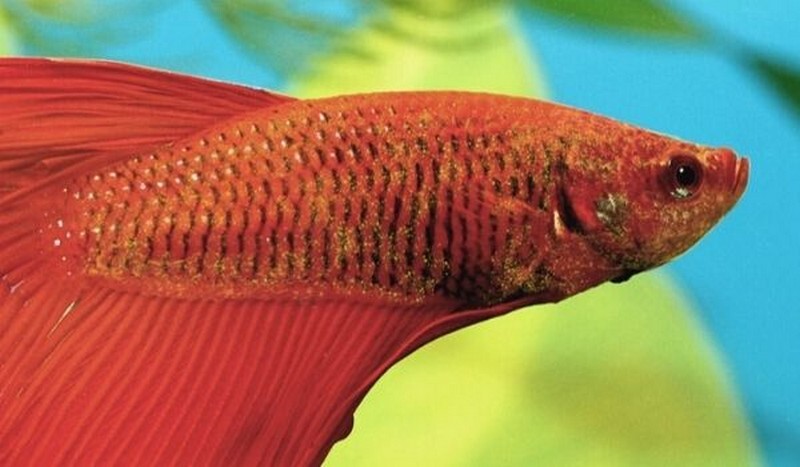
Close-up of a betta with velvet disease – note the fine gold-dust texture on the skin and eyes. Cause: Velvet is a parasitic disease caused by microscopic dinoflagellate parasites (typically Piscinoodinium species). It’s also known as “gold dust disease” due to the gold-yellow rusty coating it produces on the fish. In bettas, velvet often arises when the fish is stressed or chilled, because the parasites thrive in poor conditions and can overwhelm a weakened host. It is highly contagious – a single infected fish can spread velvet parasites to an entire aquarium. Cool water (below 76°F), inadequate tank cleaning, or introducing an infected fish or plant can all kick off a velvet outbreak. Symptoms: In the early stage, velvet can be hard to spot. In good lighting or under a flashlight, you may see a fine yellow, gold, or rust-colored dusting on the betta’s body, gills, or fins. It might look like the fish was lightly sprinkled with gold powder. Bettas with velvet often have clamped fins (held tight against the body) and exhibit itching behavior – you’ll see them dart around, rubbing against objects to scratch the irritation. As the parasite attacks the gills and skin, the fish becomes lethargic, may breathe rapidly, and often loses appetite. In advanced cases the betta’s skin may peel or shed a slimy film. Progression: If left untreated, velvet disease can be fatal within days. As the parasites rupture skin cells and destroy gill tissue, the betta can suffer organ failure or suffocation. The gold dusting usually becomes more intense and widespread as the parasite multiplies. Other fish in the tank will also start showing symptoms as it spreads. Because it’s highly contagious, velvet can swiftly wipe out fish in a community. Treatment: Begin treatment at the first suspicion of velvet. Move the betta to a quarantine tank to contain the outbreak. One unique aspect of velvet is that the parasite has some plant-like characteristics and is light-sensitive – therefore, keep the hospital tank dark by turning off lights and even covering the tank during treatment. Raise the water temperature gradually to ~82–84°F to accelerate the parasite’s life cycle and boost the betta’s immune response. The most effective medications for velvet are anti-parasitic meds with copper – for example, a chelated copper treatment (like Seachem Cupramine or Mardel CopperSafe). Follow the dosage carefully, as copper can be toxic if overdosed. Alternatively, acriflavine or formalin/malachite green treatments can work (many “velvet cure” products contain these). Along with medication, some aquarists add aquarium salt (1 tsp/gal) to help relieve the fish’s stress and protect the slime coat. Continue treatment for the full recommended period and a few days beyond visible recovery to ensure all parasites are eliminated. Prevention: Velvet parasites are often present in water at low levels, but a healthy betta can fight them off. Prevent velvet by keeping your betta’s environment optimal – warm (78-80°F), clean, and stress-free. Avoid sudden chill or temperature swings. Quarantine new fish or live plants for at least a week to ensure they aren’t carrying velvet. In community tanks, treat all fish if any sign of velvet appears, since it spreads quickly. Regular use of a UV sterilizer can kill free-swimming velvet tomonts as an extra precaution. By maintaining tropical temperatures and good water quality, you greatly reduce the odds of velvet striking your betta².
6. Columnaris (Cotton Mouth Disease)
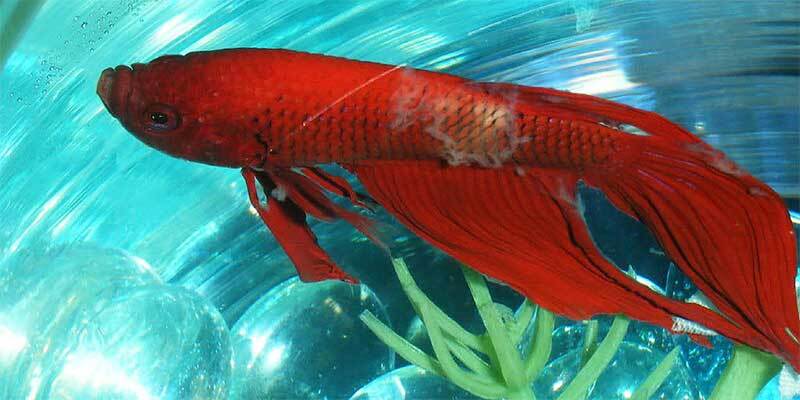
Betta with columnaris – note the cottony white patch on its side (often mistaken for fungus). Cause: Columnaris is a bacterial infection caused by Flavobacterium columnare. It has many nicknames – often called Cotton Wool Disease or “Cotton Mouth” – because it produces fuzzy white patches that resemble cotton fluff. (Despite the nickname, it is not a true fungus, though it looks like one.) Columnaris outbreaks are usually triggered by stress and poor water quality. Overcrowding, high bioload, warm water (the bacteria thrive above ~75°F), and insufficient tank maintenance can all contribute. The bacteria are present in most aquariums in low numbers, but a stressed betta with a weakened immune system can succumb to infection, especially if it has open wounds or damaged fins where bacteria can enter. Symptoms: Early symptoms include off-white or grayish spots or filmy patches on the betta’s body, mouth, or fins. These lesions often start small and may look like a pale, milky discoloration or a fuzzy coating on the skin. As it progresses, you might see stringy, cotton-like growths on the mouth (“mouth fungus”) or edges of ulcers. Fins may appear to rot or fray (fin rot can accompany columnaris). In severe cases, open sores or ulcers develop on the body, sometimes with a characteristic “saddleback” lesion across the back near the dorsal fin. The betta may become lethargic, refuse food, and show rapid breathing if its gills are infected (columnaris can damage gill tissue). Progression: Columnaris can take either a chronic form (slowly progressing over days) or an acute form that can kill a fish within 24–48 hours. The acute form causes rapidly spreading lesions and often a systemic infection (bacteria entering the bloodstream), leading to death very quickly. In a community tank, columnaris bacteria can spread to other fish through the water. This disease needs prompt treatment – a betta with advanced columnaris (large wounds, breathing difficulty) has a much poorer chance of recovery. Treatment: Immediately isolate the affected betta in a hospital tank to prevent spread. Because columnaris bacteria flourish in warmer water, it can help to lower the water temperature to around 75°F during treatment (a bit cooler water slows the bacteria’s growth). Perform daily partial water changes to keep water ultra-clean. The primary treatment for columnaris is antibiotics. Effective options include Kanamycin (Kanaplex) and Furan-2 (nitrofurantoin/nitrofurazone), or a combination thereof, which target gram-negative bacteria. Other broad antibiotics like oxytetracycline can also work. You may also give the betta short salt baths (in a separate container with 1 tsp/gal aquarium salt for 10-15 minutes) to help disinfect the surface and relieve osmotic stress. Ensure plenty of aeration, as gill damage can reduce the fish’s oxygen uptake. Follow through with the full course of treatment even if symptoms improve, as columnaris can linger. Prevention: Good aquarium hygiene is critical to prevent columnaris. Keep the water clean with regular changes and avoid high temperatures above 80°F when possible (bettas prefer ~78°F; very warm water can encourage columnare bacteria). Avoid overcrowding – give your betta adequate space (5+ gallons for one betta) and keep tankmates to a minimum. Provide a stress-free environment; for example, use a gentle filter and plenty of hiding spots. Quarantine new fish before adding them to your betta’s tank, since columnaris is commonly introduced by newcomers. Even things like live foods can carry bacteria, so source them carefully. By keeping water quality high and stress low, your betta’s immune system can usually fend off columnaris bacteria before they ever gain a foothold¹.
7. Fungal Infections (Cotton Wool Fungus)
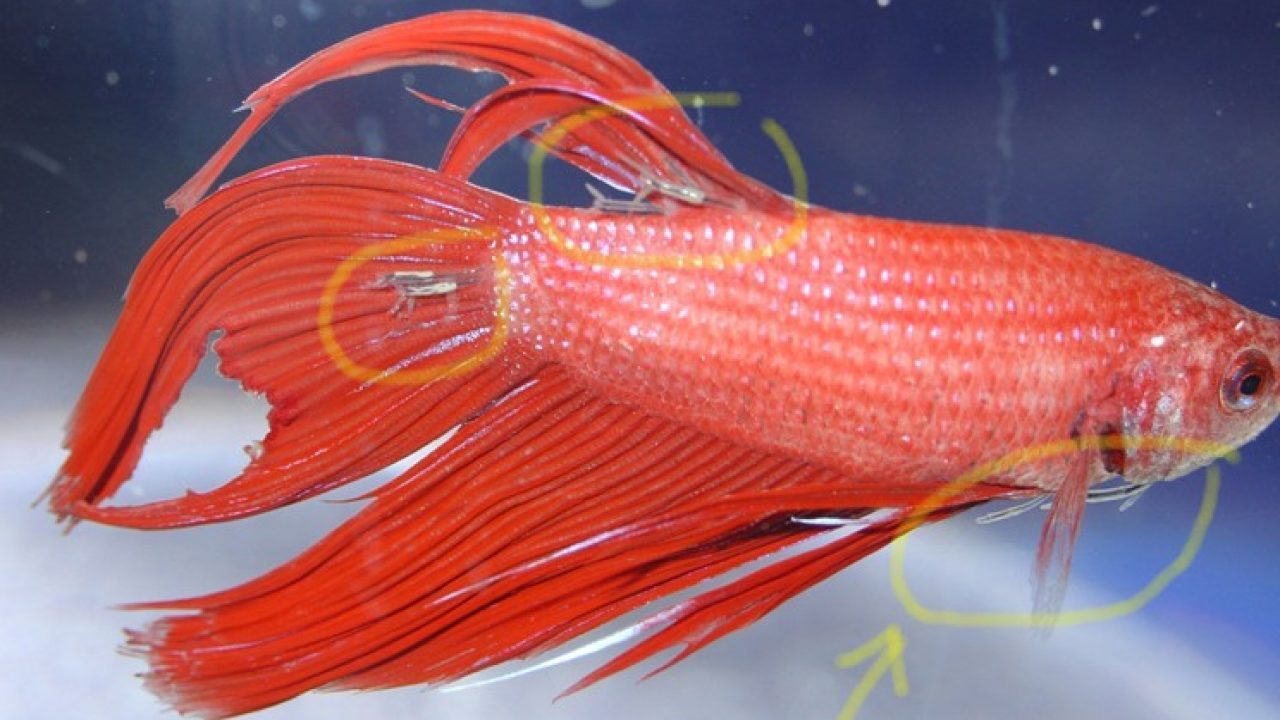
Cause: Apart from “false fungus” infections like columnaris, bettas can also get true fungal infections. These are usually caused by water molds such as Saprolegnia. Fungal spores are present in most tanks but only invade when the fish’s defenses are compromised – often as secondary infections on wounds or areas already damaged by another disease (like fin rot or injuries). Cool temperatures and dirty, organic-rich water also favor fungus growth. Symptoms: Fungal infections typically appear as white or off-white fuzzy patches on the skin, mouth, fins, or even eyes of the betta. They often look like patches of cotton or wool growing on the fish, hence the term “cotton wool fungus.” You might first notice it on an area where the fish had a scrape or on dead tissue of a fin. Unlike columnaris, true fungus growth tends to be fluffier and more irregular in appearance (like cotton balls). The betta may show signs of irritation (scratching against objects) and the infected area can spread if not treated. Progression: Fungus can spread over the body surface, damaging skin and tissue. If it reaches into deeper tissue or the bloodstream, it becomes life-threatening. Fungus on the gills can impair breathing. However, fungal infections usually stay external. The danger is that an untreated fungus can continue to grow and also invite bacterial infections on top of it. Treatment: The treatment for true fungal infections is antifungal medication. Move the betta to a quarantine tank for treatment to avoid exposing other fish. Common treatments include aquarium antifungal drugs like methylene blue, malachite green, or specific antifungal additives available in pet stores. Another effective medication is fish fluconazole, an antifungal that can be used in the water to kill fungus at the source. Give your betta a methylene blue bath or use a broad antifungal remedy as directed until the cottony growths disappear. In addition, improving water conditions and raising the temperature to around 80°F can help the fish fight off the infection. Adding a small amount of aquarium salt (1 tsp/gal) can assist by reducing osmotic stress. Gently swabbing the affected area with a cotton swab dipped in a dilute antiseptic (like methylene blue solution) can physically remove some fungus – do this with extreme care to not harm the fish’s slime coat. Prevention: Most fungal outbreaks are preventable by maintaining a clean tank and preventing injuries. Promptly treat any small wounds or fin rot so fungus doesn’t get a chance to colonize the dead tissue. Keep the water slightly on the warmer side (around 78-80°F) and well-filtered, as fungus thrives in cooler, stagnant water. Avoid leaving any dead tank mates or rotting food in the aquarium, as these can become breeding grounds for fungus. When introducing new water (during water changes), make sure to dechlorinate it, as chlorine/chloramine can damage a fish’s protective slime coat and make it more susceptible to fungus. By keeping your betta healthy and stress-free, you dramatically lower the odds of ever seeing cotton wool fungus appear.
8. Gill Flukes
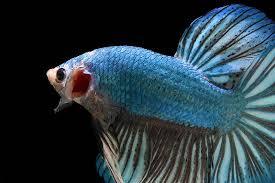
Cause: Gill flukes are tiny parasitic flatworms (trematodes) that infest a betta’s gills. The most common is Dactylogyrus, often introduced via other fish or live plants. Overcrowded tanks or ponds can have fluke problems, but even a solo betta can catch flukes from snails or new plants carrying eggs. Flukes latch onto gill membranes and feed on the fish, causing irritation and gill damage. Symptoms: Infected bettas often show respiratory distress – you may see your betta gasping at the water surface frequently or hanging around near the filter outflow where oxygen is higher. They will also “flash” or rub against objects trying to scratch their gills. The gills may look red, inflamed, or covered in excess mucus as the fish’s body tries to fight the irritant. Often, the gill covers may not close fully and you might glimpse irritated gill filaments. A heavily infested betta becomes lethargic due to lack of oxygen and may lose appetite. Gill flukes are not visible to the naked eye, but their effects on the fish certainly are. Progression: If not treated, flukes can seriously damage the gills, leading to suffocation or secondary infections (as bacteria and fungus exploit the injured gill tissue). Young bettas or already weak fish can die from a heavy fluke infestation. Flukes also reproduce in the tank, laying eggs that hatch into new worms, so the problem can persist or worsen over time. Treatment: Begin by isolating the affected betta in a treatment tank to contain the parasite. Increasing aeration (or lowering the water level so the filter splash adds oxygen) will help the struggling betta breathe more easily. The main treatment for flukes is an anti-parasitic medication – typically those containing praziquantel, which is very effective against trematodes. Praziquantel (found in meds like API General Cure or Hikari Prazipro) will kill flukes and their free-swimming larvae. Follow the instructions carefully; often a second dose is needed after a few days to catch any newly hatched flukes. Giving the betta a salt dip (e.g. 1–2 teaspoons aquarium salt per gallon, short-term bath) can help loosen the flukes’ hold and reduce mucus on the gills. After removing the betta for treatment, thoroughly vacuum the main tank and clean decor, as fluke eggs might be present on surfaces. Maintain increased aeration and low stress during recovery, as the gills will need time to heal. Prevention: Flukes often hitchhike into tanks, so always quarantine new fish or plants. A preventative dip for new plants (in a mild bleach solution or alum) can kill fluke eggs. Keep the tank water clean and well-oxygenated; healthy gills are more resistant to infestation. Avoid overstocking and high waste levels that can encourage parasites. Some keepers periodically add a small amount of aquarium salt as a general tonic (though this is debated) or run UV sterilizers to kill free-swimming parasite larvae. Ultimately, vigilant quarantine and good tank maintenance are the best prevention against gill flukes.
9. Anchor Worms
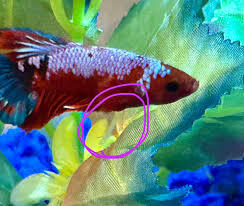
Cause: Anchor worms (Lernaea) are actually parasitic crustaceans (copepods) rather than true worms. Bettas aren’t common targets compared to goldfish or koi, but they can be affected if exposed. Anchor worm larvae often come in on live foods, plants, or other fish from outdoor ponds. Once in the tank, they burrow into a fish’s skin, anchoring themselves with a hook-like apparatus, and then the female worm extends out of the fish’s body to release eggs. Symptoms: Anchor worms are one of the few fish parasites you can see with the naked eye. An infected betta may have long, thread-like worms protruding from its scales or fins – they look like tiny whitish or greenish threads up to 1/2 inch long, sometimes with forked tails. The insertion points often become red and inflamed, and may develop sores or ulcers around them. You’ll notice the betta rubbing or scratching on objects trying to dislodge the worms. Each worm causes irritation and damage at the attachment site, so multiple worms can really weaken a fish. Secondary bacterial infections are common at the wound sites, so you might see white fuzz (fungus) or redness around the worm. The stress of the infestation will make the betta listless and it may lose appetite if the case is severe. Progression: If not addressed, anchor worms can multiply in the tank as the females release larvae. A heavy infestation will cause significant stress, open wounds, and infection, which can be fatal to the betta. The wounds from the worms can also lead to scars or deformities on the fish as they heal. Treatment: Removing anchor worms often requires a combination of manual and chemical methods. If there are only one or two large worms on the betta, you can attempt to manually remove them very carefully. Using clean tweezers, grasp the worm as close to the fish’s skin as possible and pull it out in a swift, steady motion. (It helps to hold the fish gently in a soft net just at the water surface for this.) After removal, swab the wound with an antiseptic like iodine to prevent infection. Next, move the fish to a quarantine tank for recovery and to treat any remaining unseen larvae. Treat the water with an anti-parasitic medication effective against anchor worms – diflubenzuron (found in some parasite meds) or again praziquantel can work, as can other meds labeled for crustacean parasites. Follow product instructions closely. Provide daily salt baths (1 tsp/gal for 10-15 minutes) to help the fish heal and to irritate any remaining parasites. Meanwhile, thoroughly treat the main tank: perform deep gravel vacuuming and consider treating that tank as well (without the fish) to kill any free-swimming larvae. Some keepers use potassium permanganate dips for tank décor to ensure no parasites remain. Prevention: Anchor worms often come from outdoor sources, so be cautious when feeding live foods from ponds or adding pond plants. Quarantine and observe any new fish for at least 2–4 weeks; look closely for any tiny thread-like worms on their body. If you have multiple tanks, never share nets or equipment without sterilizing, as eggs can hitchhike on wet equipment. Keeping your aquarium clean will reduce places for any larvae to hide or overwinter. In case of any outbreak, treat the entire tank promptly – do not assume it’s an isolated problem, because by the time you see the worms, they’ve likely released eggs in the water. Swift, thorough treatment is key to ensuring anchor worms do not recur.
10. Hole-in-the-Head Disease (HLLE)
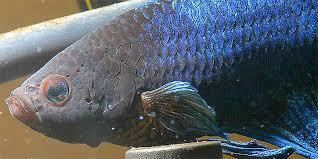
Cause: Hole-in-the-Head disease, also known as Head and Lateral Line Erosion (HLLE), is seen more often in cichlids but can affect bettas too (though it’s not very common in bettas). In bettas, it’s usually linked to poor nutrition and poor water quality over a long period. A protozoan parasite (Hexamita) is thought to be involved in some cases, but nutritional deficiencies (especially lack of vitamins like vitamin C and D) and activated carbon dust have also been implicated. Stress and a subpar diet set the stage for this condition. Symptoms: Early on, you might notice one or two small pits or pinhole lesions on the betta’s head, typically around the eyes or near the gill plates. Over time, these holes may slowly enlarge or multiply, sometimes connecting into larger eroded areas. In bettas with strong coloring, you may see loss of pigment around the lesion edges. The lateral line (a sensory organ along the side) may also show interrupted or eroded scales. The fish might behave normally at first, but as the holes deepen it can become more lethargic or lose appetite. Secondary bacterial or fungal infections can infect the open sores, leading to white edges or redness. Progression: Hole-in-the-Head usually develops gradually. If the underlying issues aren’t corrected, the lesions can grow, literally creating pits in the fish’s head. While HLLE itself might not be rapidly fatal, the open wounds can become infected, and the condition indicates the fish is in poor health. Over time, severe erosion can damage sensory organs. Treatment: The first and most important step is to dramatically improve the fish’s environment and diet. Move the afflicted betta to a pristine quarantine tank with excellent water quality. Ensure zero ammonia and nitrite, minimal nitrate – frequent water changes are essential to foster healing. Next, address nutrition: provide a balanced, vitamin-rich diet. High-quality betta pellets, supplemented with frozen or live foods (brine shrimp, daphnia, bloodworms) will supply necessary nutrients. Soaking food in vitamins (such as vitamin supplements for fish) can help. If Hexamita parasites are suspected (more common in other species, but possible), treatment with metronidazole (Fish Metronidazole) may help. Also consider a broad-spectrum antibiotic to prevent infection in the lesions. Some aquarists use API General Cure (which has metro and praziquantel) as a catch-all in these cases. Remove any activated carbon from filters, as carbon dust has been linked anecdotally to HLLE in other fish. Keep the water warm and oxygenated, and minimize stress. Given proper water and nutrition, a betta can recover and the holes can partially heal, though scar tissue may remain. Prevention: Hole-in-the-Head is best prevented by providing optimal care consistently. This means regular water changes to keep water quality high, and feeding your betta a varied diet rich in essential vitamins and minerals. Don’t rely solely on low-quality flake foods or one type of pellet – malnutrition over months can precipitate HLLE. Avoid continuously using activated carbon in betta tanks (it’s not usually necessary if water is changed regularly). If you notice any small pits forming on the head, act quickly: check your water parameters and diet. Early intervention can halt the progression of HLLE before significant erosion occurs.
Supportive Care and Treatment Approaches for Sick Bettas
Caring for a sick betta involves more than just medications – supportive care can make a huge difference in recovery. Whether your betta is battling an infection or parasite, ensure you provide a low-stress, healing environment:
-
Quarantine Tank: It is often crucial to isolate a sick betta in a separate hospital tank when treating a disease. Quarantine prevents pathogens from spreading to healthy fish and allows you to medicate without affecting the main tank’s ecosystem. A simple 2–5 gallon bare tank with a gentle heater and an air stone (or sponge filter) works well. Keep the quarantine tank impeccably clean – perform partial water changes daily or as needed to keep ammonia and waste at zero. Isolation also lets you closely monitor the betta’s condition without competition or stress from other fish.
-
Pristine Water Quality: Clean, warm water is the best medicine for a sick betta. Many common diseases (fin rot, columnaris, etc.) are directly linked to dirty water, so improving water quality is priority one. Check your water parameters and do frequent water changes to bring ammonia and nitrites to 0 ppm and nitrates as low as possible. Use a water conditioner to remove chlorine/chloramine from new water. Keep the temperature in the optimal range (76–82°F) for bettas to boost their immune response. Vacuum the substrate to remove uneaten food or feces that harbor bacteria. By keeping the environment pristine, you remove many of the stressors that slow recovery. Bettas in clean water will heal faster and are less likely to succumb to secondary infections¹.
-
Aquarium Salt Baths: Aquarium salt (non-iodized sodium chloride specifically made for fish) is a cheap and effective supportive treatment for many betta ailments. In controlled doses, salt helps by reducing osmotic stress, promoting slime coat production, and inhibiting some parasites and bacteria. For issues like mild fin rot, fungus, velvet, or parasites, you can give the betta a salt bath in a separate container: for example, dissolve 1 teaspoon of aquarium salt per gallon of water and let the betta bathe for 5-15 minutes, then return it to fresh water. Monitor the fish closely – if it shows signs of distress, move it back sooner. Salt can also be added in low levels (1-2 tsp per 5 gallons) to the quarantine tank for ongoing support, if the disease isn’t salt-sensitive. Note that live plants and certain scaleless tankmates don’t tolerate salt well, which is why treating the fish in a separate bath is often preferred. Never use table salt with additives; always use aquarium salt or pure NaCl. Also, do not use salt long-term – it’s a short-term remedy. When used properly, salt can help clear up infections and make the environment less hospitable to parasites, aiding your betta’s recovery².
-
Heat and Darkness: Many parasites (like ich and velvet) can be combated with temperature adjustments or light control. Raising the aquarium temperature a few degrees (slowly) can speed up parasite life cycles, making treatments more effective – but ensure the species can handle the higher temp. Bettas generally handle up to 82–84°F well. For velvet, keeping the tank dark (no aquarium light, and cover it with a towel) helps since that parasite needs light to thrive. Always research the specific disease – for example, do not raise temperature for bacterial infections like columnaris (cooler is better there). The right environmental tweaks can give treatments a boost and stress pathogens into submission.
-
Quality Diet and Vitamins: A sick betta may eat little or nothing, but offering high-quality, easily digestible food is important. Feed foods that entice the betta – live or frozen brine shrimp, bloodworms, or daphnia can stimulate appetite. These also provide excellent nutrition to help the fish fight infection. Soaking food in a vitamin supplement or garlic extract can encourage eating and boost immunity. If the betta refuses to eat due to illness, remove uneaten food promptly to keep the water clean, and try again the next day. Once the betta starts eating, small frequent feedings of nutritious food will help it regain strength. Avoid overfeeding, though, as uneaten food will foul the water.
-
Stress Reduction: Sick fish are easily stressed, and stress suppresses the immune system. Keep the aquarium in a quiet, calm area. Avoid tapping on the glass or making sudden movements near the tank. If the betta is in a community tank and getting harassed, isolation is a must. You can also add a bit of Indian almond leaf (IAL) or bottled betta water conditioner with stress coat to the tank – these release tannins that have mild anti-microbial properties and can calm fish. Ensure the betta has some hiding places (even in a hospital tank you can include a PVC tube or silk plant for shelter). By making the fish feel secure and minimizing extra stimuli, you allow it to direct energy toward healing.
In summary, supportive care means giving your betta the ideal conditions to recover: clean warm water, appropriate salt or heat treatments, nutritious food, and a low-stress environment. These measures, combined with the right medications, will greatly increase the odds of your betta bouncing back from illness.
Using Fish Antibiotics for Betta Fish Infections
When facing a bacterial infection in your betta (such as persistent fin rot, columnaris, popeye, or systemic infections like septicemia), over-the-counter fish antibiotics can be literal lifesavers. Many pet stores and online retailers (including aquarium supply sites) offer antibiotics formulated for fish use – often the same medications used for humans, but labeled for aquarium use and available without a prescription. It’s important to note that antibiotics should only be used for bacterial illnesses; they won’t help with parasites (ich, velvet, flukes) or true fungal infections. Below, we highlight some common fish antibiotics for bettas and what they’re used for:
-
Fish Amoxicillin – Amoxicillin is a broad-spectrum penicillin-class antibiotic. It’s effective against many Gram-positive and some Gram-negative bacteria. Betta owners use it to treat fin rot, columnaris, and other bacterial sores, especially when the infection is caught early. It’s a good all-around antibiotic for common infections. (It’s marketed for fish use with no prescription required, but should still be used responsibly.)
-
Fish Cephalexin – Cephalexin is a cephalosporin antibiotic that targets mostly Gram-positive bacteria. It can be useful for treating skin ulcers, body slime infections, and fin rot in bettas. If your betta has a stubborn infection that isn’t responding to other meds, cephalexin is an option. It’s generally safe for fish when used as directed.
-
Fish Penicillin – Penicillin G (or derivatives) can treat Gram-positive bacterial infections. It’s less commonly used alone in fish, but can help with ulcers, popeye, or secondary infections from wounds. Often, penicillin is not the first choice for betta illnesses (as many aquarium bacteria are Gram-negative), but it can be effective if lab testing shows a Gram-positive culprit.
-
Fish Ciprofloxacin – Ciprofloxacin is a potent fluoroquinolone antibiotic. It’s effective against a wide range of bacteria, including difficult Gram-negative infections. Use “Fish Cipro” for serious or advanced cases – for example, severe columnaris outbreaks, advanced fin rot, or internal infections (septicemia) where other antibiotics failed. It penetrates tissues well. Because it’s strong, ensure you follow dosage carefully. It may also affect beneficial bacteria, so watch your water quality if treating in-tank.
-
Fish Metronidazole – Metronidazole is unique: it’s an antibiotic effective against anaerobic bacteria and also a protozoan antiparasitic. It’s a top choice for treating Hole-in-the-Head disease (Hexamita protozoa) and related symptoms in bettas. It can also help with internal bacterial infections, especially in the gut. If your betta has chronic gut issues or white stringy feces, metronidazole can be used (often mixed with food) to clear internal parasites or bacteria. It’s often combined with other meds for broad treatment.
-
Fish Doxycycline – Clindamycin is an antibiotic that works well on Gram-positive bacteria and some anaerobes. In aquarium use, it might be chosen for infections like body abscesses, infected wounds, or certain bacterial fin infections. It’s not a very commonly used fish med compared to others above, but is an alternative if a Gram-positive infection is suspected (e.g. Streptococcus outbreak in a sorority tank). Use as directed; clindamycin may not cover Gram-negatives like columnaris well.
-
Fish Azithromycin – Azithromycin is a macrolide antibiotic with a broad spectrum. It’s used in fish to treat vibrio, columnaris, fin rot, and sometimes stubborn cases of popeye or gill infections. It’s relatively gentle on fish and tends to have a low risk of side effects. Azithromycin can be a good second-line treatment if others (like tetracycline) didn’t fully clear an infection. It also has some efficacy against certain protozoans (anecdotally), so it’s a versatile med to have on hand for a betta fish first aid kit.
-
Fish Doxycycline – Doxycycline is a tetracycline-class antibiotic. It’s effective against a wide range of fish pathogens, both Gram-negative and positive. Doxycycline is great for fin rot, mouth rot, columnaris, and even some internal infections. It’s often packaged in products like Maracyn II (minocycline is similar) for aquarium use. For bettas, doxycycline can treat infections without being as harsh on their system, but it may require longer treatment duration. Remember that tetracyclines can be deactivated by heavy metals in water (and make water turn a yellow hue), so follow instructions regarding water changes.
-
Fish Sulfamethoxazole – Sulfamethoxazole is usually combined with trimethoprim (as SMZ-TMP) in human medicine; as a fish antibiotic, it’s often just labeled “Sulfamethoxazole” or “Fish Sulfa”. This combo is a broad-spectrum antibacterial that works well for columnaris, fin rot, and pneumonia-like infections. It’s effective against many Gram-negative bacteria that afflict bettas. Use Fish Sulfamethoxazole when dealing with stubborn bacterial diseases or if you suspect your betta has an internal infection (e.g. dropsy) – it can help if the bacteria are susceptible. Ensure you treat for the full length (often a week or more) because this antibiotic is bacteriostatic (stops growth, doesn’t outright kill, so the fish’s immune system needs time to clear the rest).
-
Fish Fluconazole – Fluconazole is actually an antifungal medication rather than an antibiotic. It’s very useful for treating fungal infections in fish – for instance, true cotton wool fungus, body fungus, or fungal fin rot. If your betta has fluffy fungal growths that aren’t improving with external treatments, a course of Fish Fluconazole in the water can help eliminate the fungus from within. It’s safe for most fish and doesn’t harm the biofilter. Use it when you’re dealing with persistent fungus (it won’t help for bacteria or parasites). This is a specialized treatment but good to have if fungal issues arise.
Using antibiotics properly: Always follow the dosage instructions on the package of the fish antibiotic. Remove activated carbon from your filter during treatment (as it can absorb the medication). It’s usually best to treat in a hospital tank to avoid damaging your main tank’s beneficial bacteria – antibiotics can disturb the biological filter, leading to ammonia spikes. Monitor your water parameters during treatment. Most importantly, complete the full course (typically 5-10 days depending on the medication) even if your betta looks better sooner¹. Stopping treatment early can allow some bacteria to survive and develop resistance, which makes future infections harder to cure. After finishing treatment, do a series of partial water changes to remove any residual medication (or use fresh carbon to absorb it).
In summary, fish antibiotics give home aquarists the tools to treat bacterial infections that otherwise would be fatal to bettas. By choosing the appropriate medication for the suspected illness and using it correctly, you can save your betta from severe infections. However, prevention is always better – keeping the water clean and stress low will reduce the need for antibiotics in the first place. Use these medications responsibly and only when needed to ensure they remain effective. With proper care, most betta diseases can be cured, and your betta can return to its active, colorful self.
Sources
-
Bryan (2024). Betta Fish Diseases. Bettafish.org – Comprehensive guide detailing common betta illnesses (fin rot, ich, dropsy, etc.), their symptoms, causes, and treatments.
-
Bui K. (2024). 11 Common Betta Fish Diseases and How to Treat Them. Tropicflow Blog – In-depth article on diagnosing and treating frequent betta diseases, with emphasis on care tips and medication use.
-
The Spruce Pets (Reviewed 2021). Cotton Wool Disease (Columnaris) in Aquarium Fish. – Explains how columnaris bacterial infections are often mistaken for fungus, outlines symptoms like cottony growths and treatment with antibiotics.

